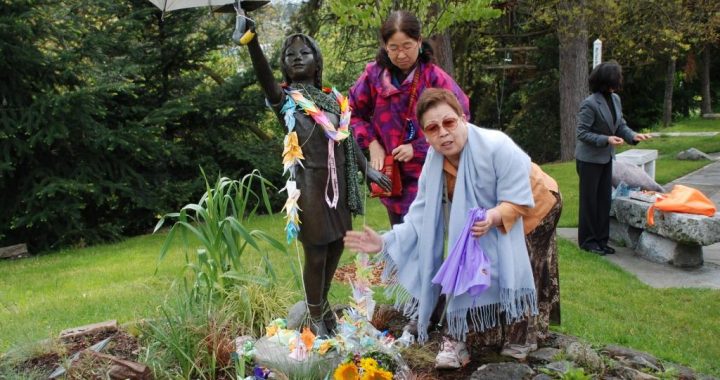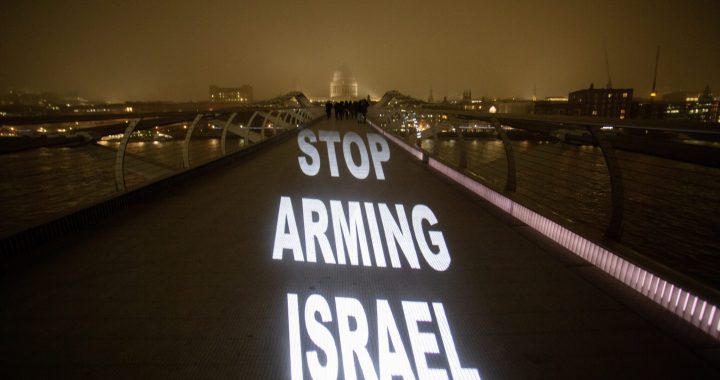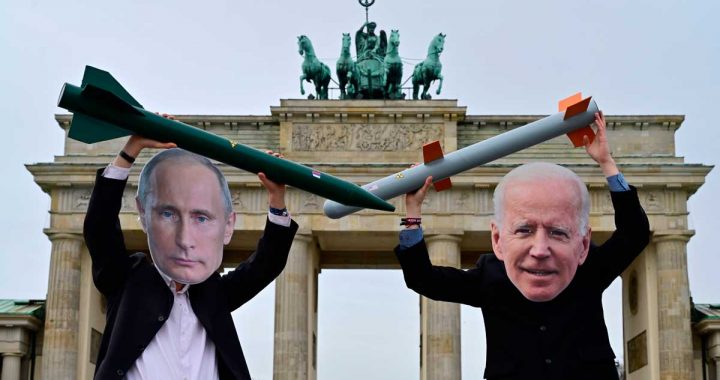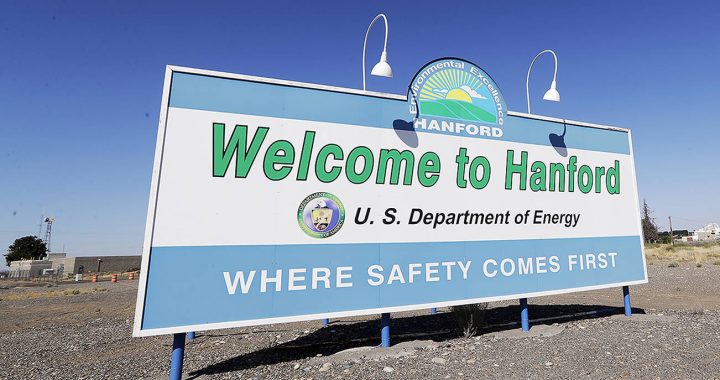Introduction by Leonard Eiger, Ground Zero Center for Nonviolent Action
Testimony by Ms. Tokie MIZUNO, Hibakusha of Hiroshima, as recorded on May 5, 2010 at First United Methodist Church, Seattle, Washington
Seventy eight years ago, on August 6, 1945, a United States (US) warplane dropped an atomic bomb, which detonated over the city of Hiroshima, Japan early in the morning.
The blast, radiation and firestorm caused by just a single bomb left approximately 80,000 people dead and 70,000 injured. Of the injured, tens of thousands more died in the subsequent days, weeks, months and years due to radiation-related effects.The multigenerational effects of the radiation continue to cause suffering.
Each year people around the world commemorate this anniversary, as well as the anniversary of the use of a nuclear weapon on the city of Nagasaki three days later on August 9th. Their historical importance is of special significance because we must maintain the collective consciousness of the atomic bombings or humankind is certainly doomed to the consequences of continuing as slaves to the myth that nuclear weapons protect us from our enemies.
Of special standing in the telling and retaining of this history are the Hibakusha, survivors of the atomic bombings. As the Hibakusha become older, it becomes imperative that we record the stories of those willing to share them; otherwise, they could be lost forever. After all, there will be no Hollywood blockbuster films telling the story of the atomic bomb through the eyes of the Hibakusha, or countless others around the world who suffered from the production and testing of nuclear weapons by the nuclear-armed nations.
In 2010 members of a delegation representing the Japan Council against Atomic and Hydrogen Bombs (Gensuikyo) on their way home after the 2010 Nuclear Non-Proliferation Treaty (NPT) Review Conference in New York stopped in Seattle, Washington. The delegation consisted of Japanese citizens from many cities, including Hiroshima and Nagasaki. The most venerable member of the delegation, Tokie MIZUNO, a Hibakusha of Hiroshima, shared her own story of the atomic bombing publicly for the first time.
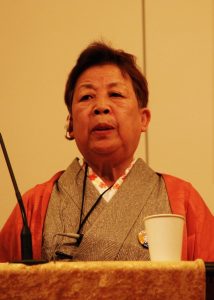
Tokie Mizuno speaking at Seattle First United Methodist Church, Seattle, Washington on May 5, 2010
MIZUNO-sama was 5 years old when the bomb exploded over her city, and she has never forgotten that day, still bearing the scars both visible and invisible that have affected her life and health. She wrote down her story and then stood before people in both Seattle and Tacoma, and with great conviction gave her testimony, calling on all of us to work together for a nuclear weapon-free world. Now 85, she continues to share her story.
I invite you to read MIZUNO-sama’s testimony (below) and pass it on to others, especially those who are still unaware that the nuclear-armed nations, led by the US and Russia, still brandish thousands of nuclear weapons against each other and are prepared to use them.
What we must remember NOW is that the bombs dropped on Hiroshima and Nagasaki were tiny in comparison with today’s thermonuclear warheads. The thousands of thermonuclear weapons in just the arsenals of the US and Russia are enough — in addition to the millions of immediate deaths caused by blast, radiation and firestorms — to cause Nuclear Winter, leading to global famine and the likely extinction of much, if not all, life on Earth!
The Hibakusha keep the memory of those horrific events in 1945 alive so that we may choose to not allow the unthinkable to happen again – for the sake of future generations. For if we do not remember history, we are doomed to repeat it; this horrific episode must never be repeated, as the next time it will be at an unimaginable scale. Let us hear the voices of the Hibakusha with all our hearts and minds so that we may carry their message everywhere…
“Hiroshima, Nagasaki, Never Again!”
Testimony of Tokie MIZUNO, Hibakusha of Hiroshima (Recorded in 2010)
My name is Tokie MIZUNO and I am a survivor of Hiroshima. 65 years ago, when I was 5 years old, the atomic bomb was dropped on my city, Hiroshima. I was near my grandmother’s house, 1.2 kilo-meters from ground zero.
The City of Hiroshima was completely destroyed and was turned into rubble by the enormous destructive power of the atomic bomb. As other survivors, I was barely alive and the damage on my body and mind was unbearable.
I might have been lucky to survive but life hasn’t been easy on me financially, physically and mentally. This agony should not be repeated on anybody else on earth. That’s why I have become involved in anti-nuclear actions with other Hibakusha as well as many other Japanese people.
We have been collecting signatures for a nuclear-weapon-free world, and engaging in activities to defend the Japanese Constitution, especially the Preamble and Article 9, which pledges never to wage war again.
Article 9 of the Japanese Constitution clearly states “the Japanese people forever renounce war as a sovereign right of the nation and the threat of use of force as means of settling international disputes.”
And it adds “In order to accomplish the aim of the preceding paragraph, land, sea, and air forces, as well as other war potential, will never be maintained.” Article 9 is our treasure.
This treasure for Japan was achieved with the sacrifice of precious lives of 20 to 30 million people in Asia and Pacific. This is one of the greatest achievements for the world, too, and we will hold on to it forever.
Let me talk about that day…….
On the morning of August 6th, 1945, just before Hiroshima was hit by the atomic bombing, one of the women in my neighbourhood came to my house and said “We have some sweets. Why don’t you come and have some?”
So my little 3-year-old brother and I happily followed her. In those days it was very difficult to have sweets. My neighbour’s son, a soldier, was back from the battlefront to treat his wounds. He brought some sweets with him for his family and the neighbour invited us in.
We were about to eat our sweets when the bomb exploded.
With a blinding flash, the whole house was flattened.
I found myself trapped under the rubble. I tried to look out from my little prison and saw my younger brother, rescued by a soldier, standing there with blood on his face and head.
I myself was pulled out of the rubble. My right arm was heavily injured and I had several cuts on my face. My neighbour tore her underwear into pieces and covered my arm to stop it bleeding. Later I was told that it was her treatment that saved my right arm.
I don’t remember how many hours had passed, but I saw my mother crawling to me over piles of rubble. She was desperately looking for me and my younger brother. She looked awful with only tattered patches of her clothing on her body and her hair standing on end.
My 12-month-old baby brother was still buried under the rubble. My mother and grandmother were desperate and were removing the debris saying they should get him back home, even if he was dead.
They also called out for help to people walking by but nobody stopped. They went on their way absentmindedly – they were like ghosts.
We saw flames in the distance coming towards us. Terrified, my younger brother and I were both crying. I don’t remember the pain of my injury, but many collapsed houses around us horrified me, although my father thought I was just stunned.
Fortunately, my baby brother was alive, and we managed to escape to a raft on the river. There were countless dead bodies floating and fire balls were falling all around. Red-hot galvanized plates darted towards us and made a huge noise when they dropped into the river. It was not a safe place to be.
At that time I was so young that I don’t remember exactly what happened. But my deceased parents and grandmother told me a lot about that day.
There was a woman on the raft who gave us food and water. She also gave my mother part of a Kimono to use as bandages and as a strap to carry me on her back.
In the evening, cooling our bodies with river water, we finally found a place to evacuate to. It was a shrine near a railway station called Koi.
Because my grandmother and I were seriously injured, we two were left at the shrine while my mother and brothers escaped to my aunt’s house in Itsukaichi City. My uncle who rushed to Hiroshima to search for us carried them on his handcart.
Grandmother thought we could have some treatment at the shrine but nothing was available. We were given only one rotten rice ball. We finally evacuated to my aunt’s house.
They were farmers and gave us good food. I had tomatoes, cucumbers, pickled shallots etc. to my heart’s content. It may be this diet that has kept me healthy.
My father had to spend several nights at shelters in Hiroshima. He died abruptly from TB in August 1956, which we believe was due to residual radiation. Later when I was working to collect survivors’ stories, I learned that there were many Hibakusha who suffered from TB during those difficult times.
My mother died in Oct. 1967. I believe that both of my parents were killed by the atomic bomb. At that time I thought that it was our fate and that because Japan was at war we couldn’t complain about it.
I also thought we were just unfortunate because we were in Hiroshima when the atomic bomb was dropped. Later I learned history, which completely changed my mind. I knew why the US had done it.
The US government has kept saying that the atomic bombing of Hiroshima and Nagasaki ended the war and saved millions of people’s lives. That’s what they teach at schools.
However, in 1944 there was scarcely any food left for Japanese people. People were dying from hunger. Japan’s ground and air forces and navy were almost completely destroyed. It was obvious that Japan was finished.
Nonetheless, 210,000 people were killed in Hiroshima and Nagasaki. Why?
In 1945 the war ended, but another war, the Cold War between the US and the Soviet Union had already started. The US wanted to have an advantage over the Soviet Union militarily and politically by showing the power of nuclear weapons. They also wanted to test their newly developed technology, atomic bombs.
Hiroshima and Nagasaki were chosen as testing grounds with real live people.
Let me share with you what the atomic bombing had done to us. The atomic bomb caused massive destruction and killed tens of thousands instantly and indiscriminately. It also emitted massive amounts of radiation which has afflicted us for decades.
Hibakusha describe the moment of the bombing as “The Sun dropped on us and burnt us”. When Bomb exploded, a huge fireball, 280 meters in diameter, was generated in the air.
Heat rays emitted from it raised the ground temperature, from 3000 to 4000 degrees Celsius (5500 to 7300 degrees Fahrenheit) near the hypocenter.
This was a boy, the charred remains. 700 meters from the hypocenter (Aug. 10. Nagasaki).
This is the shadow of a man burnt into the granite steps.
Within 1.2 kilo-meters of ground zero, those who were directly affected by the heat rays suffered terrible burns and their internal tissues and organs severely damaged. Most of them died instantly or within a few days.
The explosion also created a powerful blast and destroyed most of the wooden houses in 2-kilometer radius of ground zero. People were blown through the air and many crushed to death under collapsed buildings.
Radiation left the human body with serious damage. It penetrated deeply into our bodies, damaged cells and diminished the blood generation function of bone marrow.
It also damaged inner organs. Even those who looked uninjured later became ill and died.
Residual radiation left on the ground affected many long after the explosion. Those who entered the city to search for their families/friends or for relief operations eventually developed similar symptoms and died.
Nuclear weapons are unspeakable weapons. They don’t allow us to live nor die as humans. They are weapons of absolute evil which can never co-exist with human beings.
3.2 million Japanese people lost their lives in the Asia-Pacific War. 20 to 30 million people were victimized by the Japanese military in Asia.
Learning from it, we have acquired the war-renouncing Japanese Constitution. However, military spending in the world is growing. Trillions of dollars are being spent for military purposes. If used for peaceful purposes, this money could solve many problems for human-kind.
20th century war is gone. Our responsibility is to hand over a peaceful and cultivated 21st century to the next generation. I strongly believe that we can hand over a nuclear-weapon-free world to future generations if we work together in solidarity with the people of the U.S. and with the people of the world.
Thank you.
********************
Editor’s Note: The banner photo shows Tokie Mizuno, Hibakusha of Hiroshima, placing origami cranes at the statue of Sadako in Peace Park, Seattle, Washington in May 2010.

